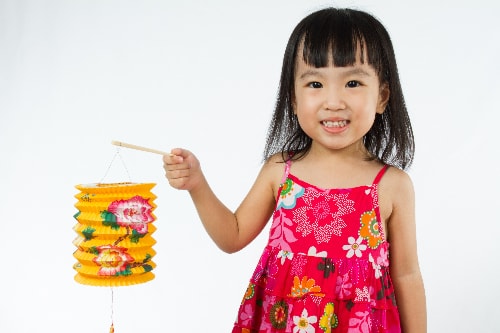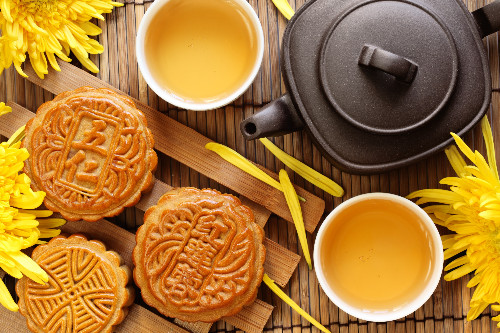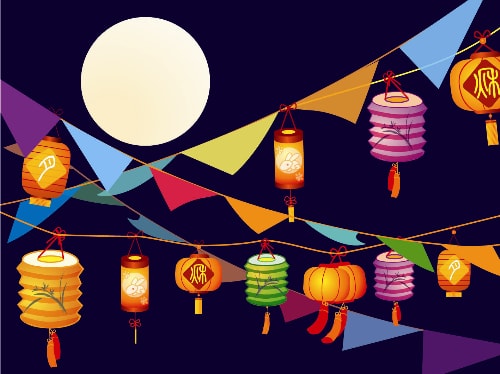Three stories mother told her children on Mid-Autumn Festival
The stories help children better understand the meaning of Mid-Autumn Festival, develop their imagination and nurture good virtues.
Children are eager to break the lantern festival under the shimmering moonlight, watch the lively lion dance, and taste the delicious cakes. On the full moon night of August, mothers can tell their children the story of the Mid-Autumn Festival, the mooncakes, and the lanterns to help children love the beautiful traditions and culture.
The story of the Mid-Autumn Festival
Legend has it that Emperor Tang Ming Huang (713 - 741 AD) was strolling in the Imperial Garden on the full moon night of the eighth lunar month. On the night of the Mid-Autumn Festival, the moon was very full and bright, the air was cool. While the king was enjoying the beautiful scenery, he met the Taoist La Cong Vien. The Taoist had the power to take the king to the moon palace. There, the scenery was even more beautiful.
The king was delighted to enjoy the fairyland and the magical sounds and lights, along with the fairies in beautiful colorful costumes dancing and singing. In that wonderful moment, the king forgot that it was almost dawn. The Taoist had to remind the king to leave, but he was still filled with regret.
Upon returning to the palace, the king was still nostalgic for the fairyland, so he created the Khuc Nghe Thuong Vu Y. Every full moon night of the eighth lunar month, the king ordered the people to organize a lantern procession and a celebration party. He and Yang Guifei drank wine under the moon and watched the palace maids dance and sing to commemorate their magical trip to the moon palace. Since then, organizing lantern processions and parties on the full moon day of the eighth lunar month has become a folk custom.
Emperor Minh Hoang immediately ordered the construction of the Vong Nguyet Dai (Moon-watching Tower). In the middle of the full moon night, the king went up to the Vong Nguyet Dai to enjoy watching the moon. The king immediately established the Mid-Autumn Festival when the full moon of the eighth lunar month came. Since then, the Mid-Autumn Festival has become an annual custom, when the moon is full and bright, with the music of the Khuc Nghe often resounding in the palace. Nowadays, along with the joy of watching the moon and enjoying the feast, the Mid-Autumn Festival has become a festival for children.
|
Children look forward to the Mid-Autumn Festival, carrying lanterns under the moon and enjoying moon cakes. Photo:Shutterstock |
The story of the moon cake
One Mid-Autumn night, the moon was clear and the breeze was cool. Emperor Tang Ming Huang (Tang Xuanzong) and Yang Guifei ate walnut cakes and watched the moon. The king thought the name walnut cake didn't sound romantic so he called it Nguyet cake (moon cake).
From then on, the moon cake was called Nguyet cake. Later, people still called it Moon cake to refer to the cake enjoyed on the full moon night of August. People often enjoy the cake with family members to feel the warm family relationship.
Mom can tell her own feelings about moon cakes to her children. The good story will enter the children's mind gently but deeply and unforgettable.
|
Moon cakes are an attractive gift for children to enjoy on the full moon day. Photo:Shutterstock |
The Legend of the Lantern
Once upon a time, near the Mid-Autumn Festival, by order of the King, people enthusiastically competed to make strange lanterns but none of them satisfied the King. At that time, there was a poor farmer named Luc Duc who had lost his father and lived with his mother very dutifully. One day, in his dream, Luc Duc saw a white-haired and bearded god appear and say:
- I am Thai Thuong Lao Quan, seeing that you are poor but filial to your mother, I will show you how to make a lamp to offer to the king.
The next day, following the God's instructions, Luc Duc and his mother took white bamboo stalks and colored paper to make the lantern. Time passed quickly, and when the lantern was finished, the full moon day of the eighth lunar month had just arrived. He happily brought the lantern with his mother to the capital to present to the king. The king looked at it and found the lantern strange, colorful, and moving, so he was very pleased.
When the king asked about the meaning of the lamp, Luc Duc followed the God's words and said: "Your Majesty, the bamboo in the middle of the lamp represents the axis of the universe, the six-sided spinning pinwheel symbolizes the six personalities of humans including love, hate, anger, sadness, joy, and resentment. The pinwheel is always spinning, symbolizing that humans change for a reason, that is the way of being human. The pinwheel is always spinning thanks to the light of the lamp, just as good people are also thanks to morality. The six sides of the lamp are made of bright paper, representing the personality of humans."
The king ordered the lanterns to be brought out for the people to see. The lanterns were lit and the pinwheels turned. The six brilliant colors displayed were images of the king, mandarins, people, and horses following each other. All the figures on the lanterns were made of paper. The king rewarded Luc Duc and his mother very generously and appointed him as Van Ho Hau. From then on, every time the Mid-Autumn Festival came, remembering the story of the filial son Luc Duc, the people competed to imitate him in making brightly colored lanterns called "cau quan" lanterns.
Through the lesson of being human embedded in the meaningful story of the lantern, mothers can skillfully teach their children the good virtue of filial piety.
|
Lanterns are indispensable during the Mid-Autumn Festival, a toy that all children love. Photo:Shutterstock |





